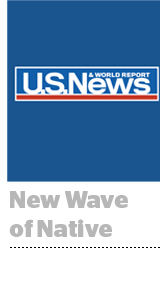 Could it be that we’re entering the second generation of sponsored content? Nativo CEO Justin Choi thinks so.
Could it be that we’re entering the second generation of sponsored content? Nativo CEO Justin Choi thinks so.
His case in point: US News & World Report, which started its sponsored content studio, BrandFuse, in 2012.
“Publishers are shifting from the first gear of native, which was adoption and seeing if they could find success selling native programs, to the second gear,” Choi said. “That means offering different types of executions, expanded offerings and more automation.”
US News & World Report is going into the next gear with Nativo. Though the publisher started doing all the sponsored content by itself, it soon realized it needed a separate technology platform to ad serve the content and distribute it in-feed across its site. But as it wanted to offer more comprehensive and unique programs to brands, it needed more options.
Nativo recently launched three new formats for publishers such as US News & World Report to showcase sponsored content. One makes it easy for publishers to create a slideshow of content. Another allows publishers to create a cluster of content created with a brand.
That’s helpful for BrandFuse managing editor Jada Graves, who wants more tools to create sponsored content for its advertisers, who include Chevron, Accenture, Optum and Children’s Miracle Network Hospitals.
Making content that’s not interruptive requires paying attention to the message as well as its distribution – US News & World Report won’t always push content out to its social feed, for example, if it’s not a fit.
Creating content that works both for brands and US News & World Report’s reputation doesn’t come easily.
“We have the privilege of assisting our audience in making consequential choices, like choosing the right school, job, vacation or car,” Graves said. “We’re humbled by the trust the audience puts in us.” Because of that trust, it must make sure BrandFuse content aligns with its editorial values.
Graves came from the editorial side of the house, and consults with that team to make sure that the topics BrandFuse covers align with what would come out of the editorial department. According to Graves, that’s the best way to make sure the content succeeds among readers.
Choi said the technology Nativo is building will enable publishers to go head-to-head with larger platforms like Facebook and now Google, which allow in-feed, native-style placements.
Plus, bespoke sponsored content programs offer more revenue to publishers, compared to commoditized in-feed units.
“Publishers are behind the curve in terms of Facebook-style in-feed video executions,” Choi said. “We’ve got to arm publishers with tools where they can monetize their sites using executions that provide much better experiences for consumers.”













